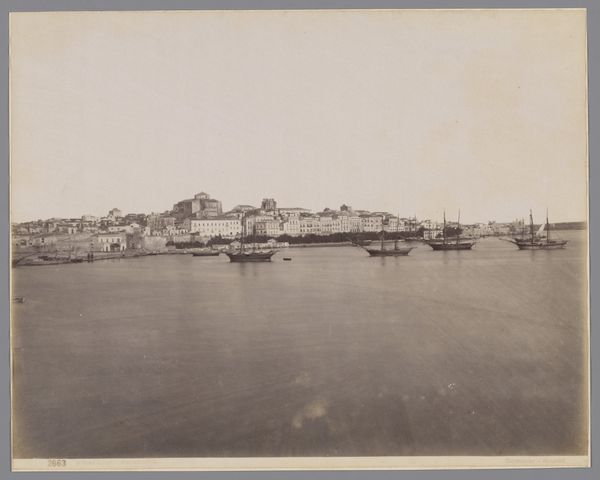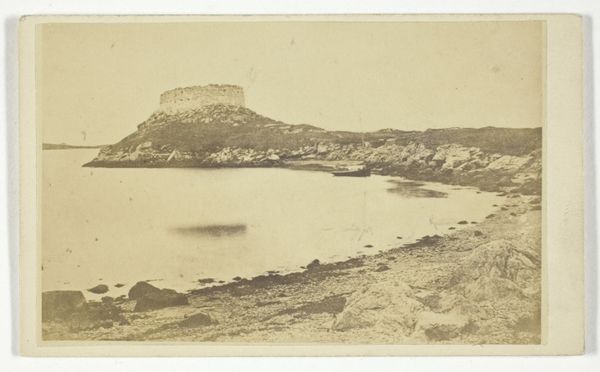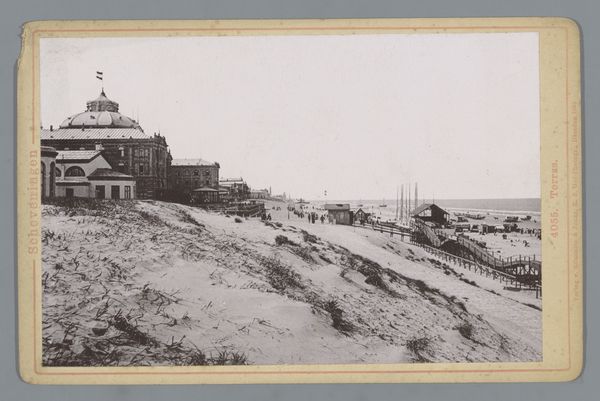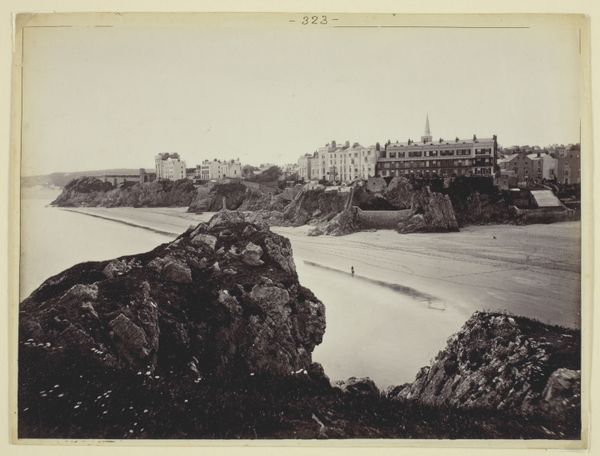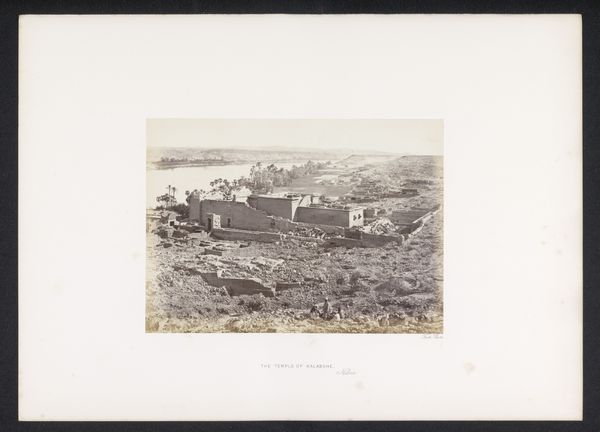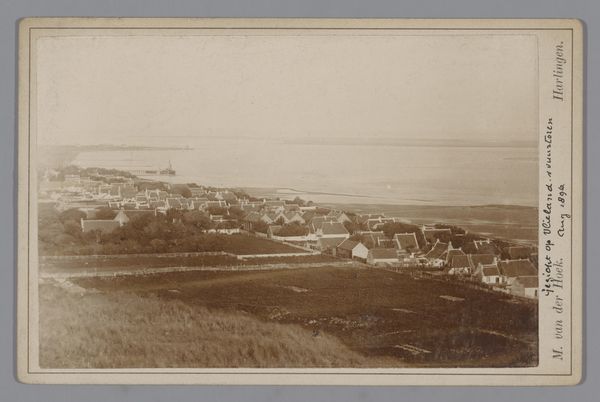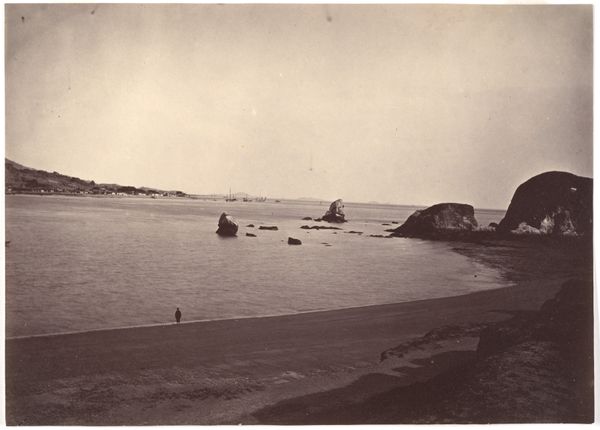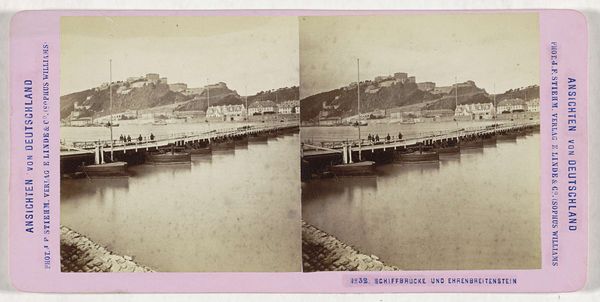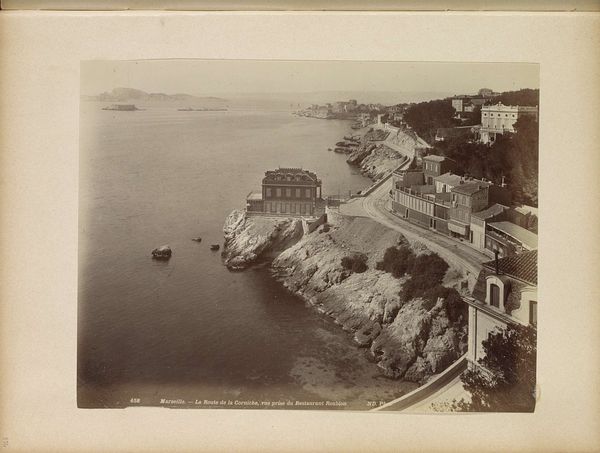
Dimensions: height 63 mm, width 105 mm
Copyright: Rijks Museum: Open Domain
Curator: Welcome! Let’s consider this fascinating photographic print by E. Pigeard, “Huizen aan de kust nabij Pornic,” believed to have been taken sometime between 1855 and 1885. Editor: Immediately, the muted tones evoke a sense of faded grandeur. There’s a quietness, almost melancholic, that I find compelling. The soft focus and limited color palette creates an ethereal quality, reminding me of a dream or memory. Curator: The houses, perched along the coastline, offer insight into the architectural trends and social structures of the period. Their positioning suggests a hierarchy, reflecting both economic disparities and the allure of coastal living that often attracted affluent individuals during this era. We might consider the legacy of coastal ownership in France and the evolution of leisure. Editor: Yes, I find the symbolism within the built environment particularly striking. The presence of these grand houses against the raw, rugged coastline might represent humanity's attempt to control nature, but nature's powerful forms persist regardless. Also the ladder that disappears, unused... the promise of elevation. Curator: I agree, the coastline serves as a stark reminder of nature’s untamable power. It forces us to consider the impact of urbanization and encroaching development. Do the houses celebrate the beauty of nature, or overshadow it? Are these simply idyllic homes, or statements of wealth and privilege? Editor: Well, consider the role of water throughout history: purification, baptism, cleansing, rebirth! Water provides both solace and reflects mortality. Its continuous movement is ever present in memory, in personal recollection and identity, whether on land or in our thoughts. Curator: A critical reading of "Huizen aan de kust nabij Pornic" can help us unpack the relationship between visual representation, historical narrative, and contemporary issues. Considering that so many of Pigeard's photos documented buildings, how are they acting as cultural symbols? Editor: I will hold with those persistent themes, the symbolic houses as monuments and testaments, memories writ in brick and stone, their place in cultural legacy. Curator: Agreed, it's a reminder that even in the quietest of landscapes, profound narratives await our attention. Editor: Beautifully said. It provides an enduring snapshot that stimulates us, perhaps like no other can, with reflections that transcend generations.
Comments
No comments
Be the first to comment and join the conversation on the ultimate creative platform.
